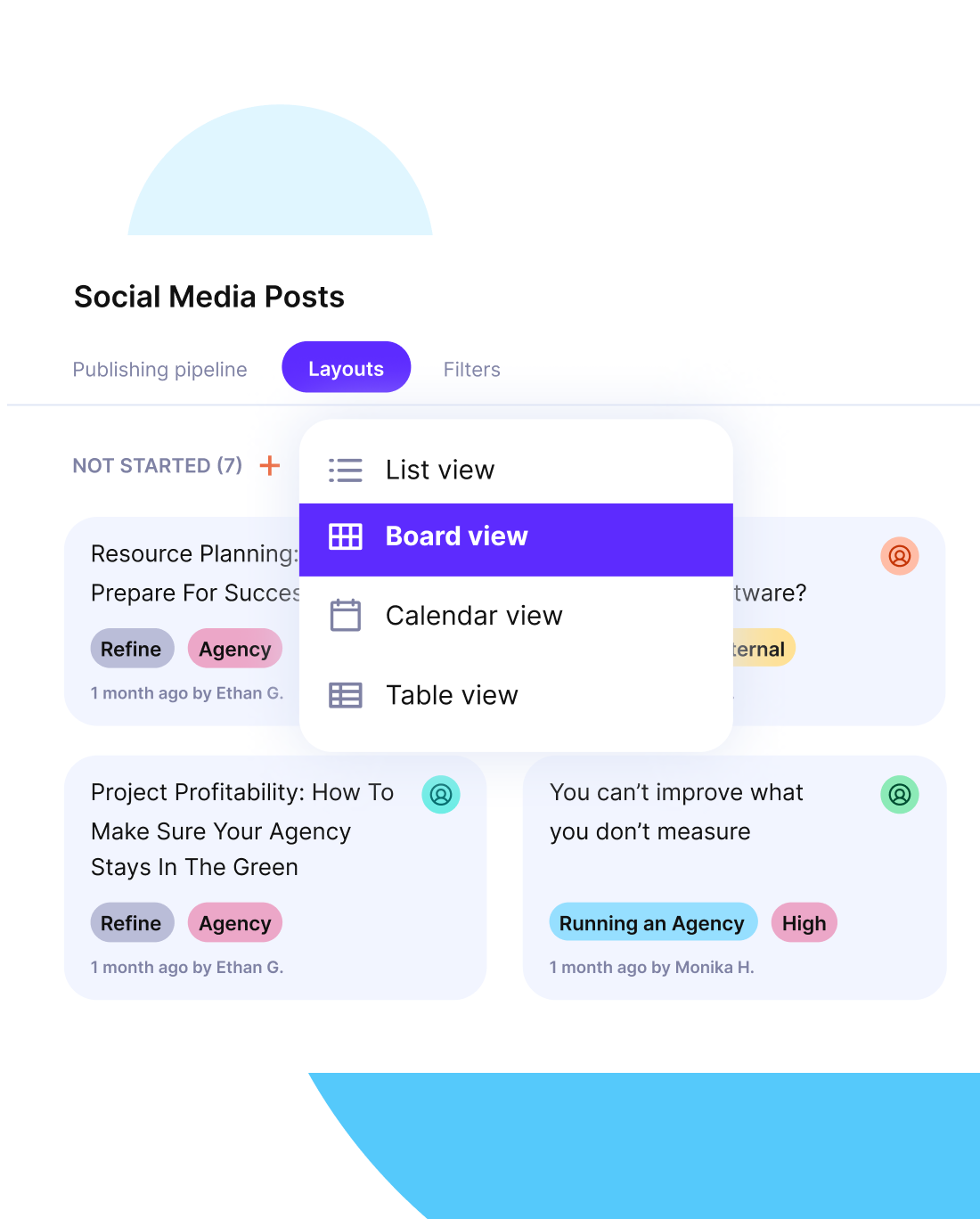Remote Team Management Guide – Best Practices & Tools (2026)
Remote team management gets messy when structure is thin, tools multiply, and expectations drift.
This project management guide shows you how to run remote work with simple systems that connect goals, communication, and accountability.
Then we’ll tackle the common challenges, lay out best practices, teach you how to select the right tools, improve communication, and keep your team engaged and accountable with less friction and better results.
Key Takeaways
- Remote team management works when goals, communication, and accountability live in one system that sets clear priorities and shows progress in real time.
- You can’t fix remote management chaos with more meetings; you need simple, repeatable systems that guide work when no one is online together.
- Standardize async updates and decision logs so remote workers hand off work cleanly across time zones and stakeholders always know the latest decision.
- Reduce tool sprawl by connecting tasks, time, budgets, and reporting to a single source of truth that flags risks before deadlines slip.
What Is Remote Team Management?
Remote team management is the practice of organizing people, tools, and workflows so that distributed teams deliver work predictably and independently. In real life, that means setting clear roles and decision rights, agreeing on simple cadences for updates, and giving everyone one place to see tasks, time, budgets, and progress.
Compared with office work, digital project management relies more on written standards, asynchronous updates, and transparent dashboards, so a systemized approach works better than ad hoc check-ins.
When those systems are missing, roles blur, visibility drops, and an always-on culture creeps in, with people checking messages at all hours, which leads to burnout and missed deadlines.
What Are the Core Challenges of Managing Remote Teams?
The biggest challenges of managing remote teams are visibility gaps, coordination across time zones, and keeping people engaged without burning them out.
Scattered tools and unclear ownership hide who is doing what. Decisions slow down when updates are stuck in meetings. Over time, people feel disconnected, which erodes quality and timelines.

Challenge 1: Visibility and workload balance
When work is invisible, some people carry too much while others wait. You should use a shared board that shows status by person and set a weekly capacity baseline so you can spot overload early. Add a simple blocked field so issues surface without chasing.
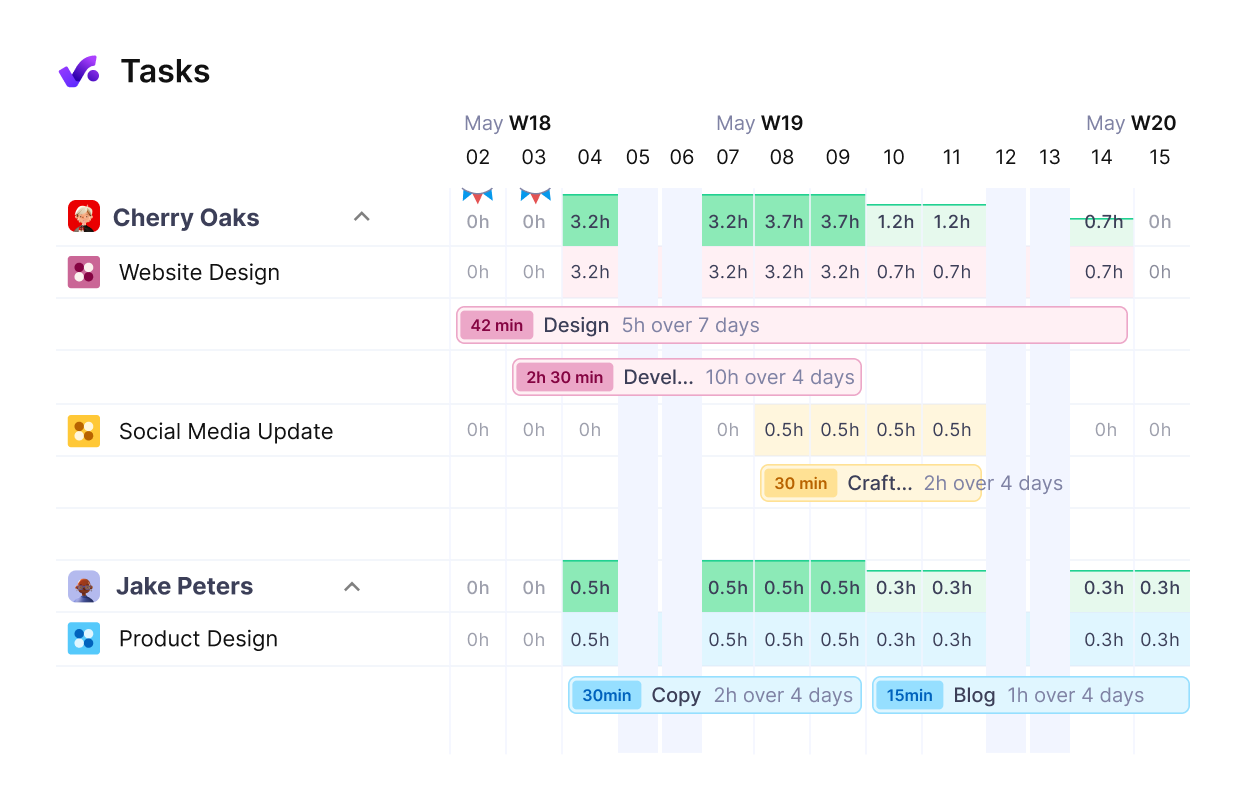
Get a real-time workload overview of your remote employees.
Challenge 2: Coordination across time zones
Handoffs slip when remote workers wait for meetings. Define an async update window, use a short handoff template, and include deadlines in each person’s local time so work keeps moving overnight.
Challenge 3: Employee engagement and isolation
Without hallway moments, motivation fades. Run purposeful 1:1s, use lightweight recognition in weekly updates, and keep optional social time on the calendar so people feel seen.
Callout: Always-on habits to watch for
- Checking Slack or email late at night or on weekends
- Feeling pressure to reply instantly to every ping
- Meetings booked at unhealthy hours across time zones
- Notifications interrupting deep work all day
Simple fixes that work:
- Team quiet hours and timezone-friendly meeting windows
- Response-time norms, for example, are within four business hours for async messages
- Status norms, set Do Not Disturb windows, and use away statuses
- Delay sending for off-hours messages and schedule updates for local mornings
- Weekly written status update and a simple decision log
- Focus blocks and a meeting-free half day each week
Manage remote teams with Productive
What Skills Do Remote Team Leaders Need?
Remote managers and leaders need to be proactive, structured, and outcome-focused. If you often feel like you are reacting to pings all day, the fix is not more availability; it is a clearer process. They make the week calmer and more predictable.
Trust grows when people know what to expect, and the next section shows how to turn these skills into simple systems. If you need more advice on leadership, head over to our project management skills overview.
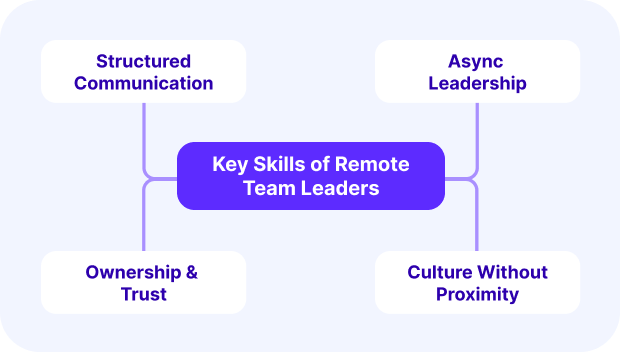
1. Structured Communication
Set rules for when, where, and how to communicate. Use shared communication channels, clear owners, and short templates for updates and decisions.
Action: publish a one-page comms charter and adopt a weekly update template.
2. Async Leadership
Design work to move without meetings. Default to written updates with response time norms and timezone windows.
Action: Set a daily update window and add a simple decision log to your project.
3. Ownership & Trust
Assign a directly responsible individual for each deliverable and state acceptance criteria. Show progress in dashboards so you track outcomes, not activity.
Action: add DRIs (Directly Responsible Individuals, the single owner for a deliverable) to tasks and review outcomes in a weekly demo.
4. Culture Without Proximity
Model healthy boundaries and recognition so the company culture does not depend on an office. Use quiet hours, focus blocks, and lightweight rituals like weekly wins.
Action: set team quiet hours and schedule a meeting for a free half day.
Next, we will turn these skills into systems for planning, communication, and tracking that form your remote accountability system.
What Are the Best Practices of Effective Remote Team Management?
The best practices for remote team management are clear goals, right-sized cadences, visible progress, and lightweight documentation. These habits make team communication easier, raise remote productivity, and reduce the Friday surprises that create firefighting.
For extra advice and new approaches, check out our Hybrid work management guide.
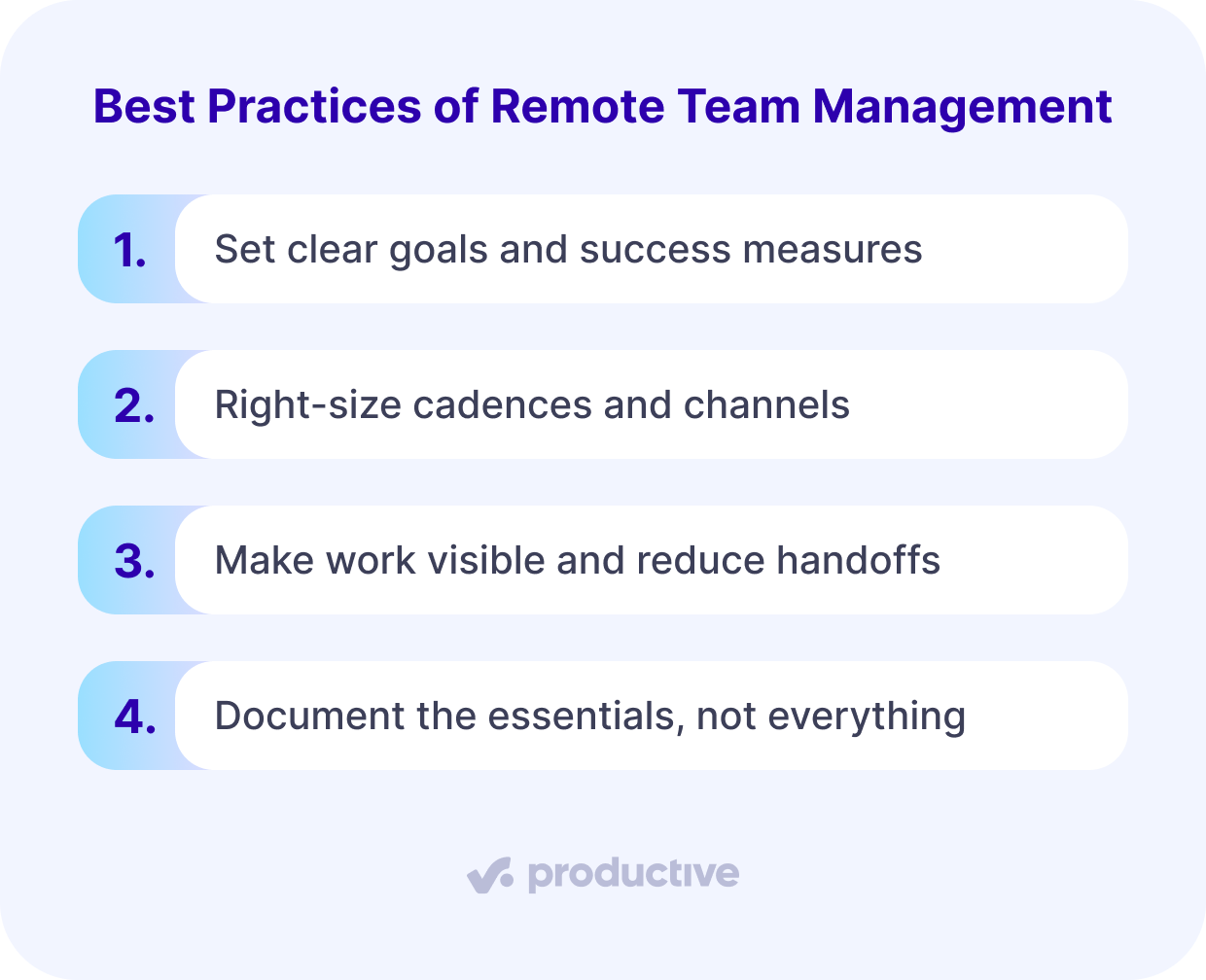
1. Set clear goals and success measures
Write one to three SMART goals for the current cycle and name a single owner for each. Add one or two performance metrics that show outcomes, not activity.
Example: “Launch site redesign by Nov 30, NPS 45 plus, time on page up 20 percent; Owner: Web Lead.”
In Productive: create a milestone for each goal, and assign the task owner to the related task list. Review the outcomes (completed tasks) weekly with your remote workers.
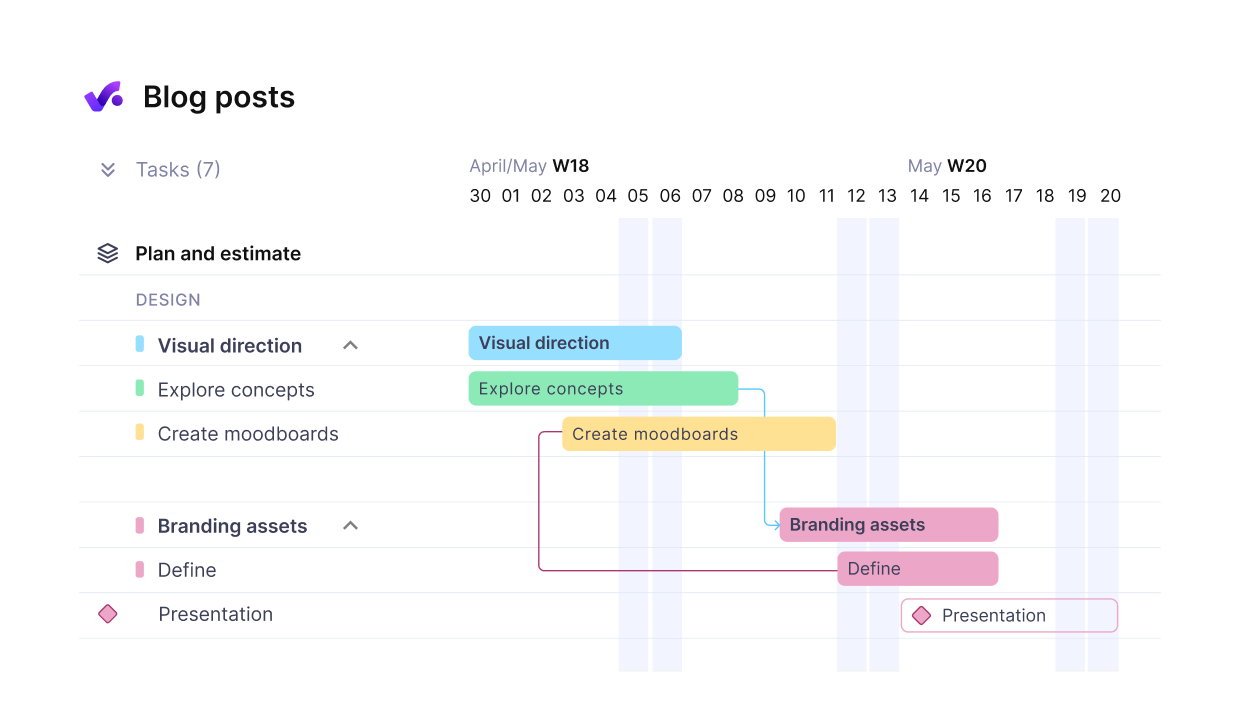
Set up dependent tasks (team goals) in workflows.
2. Right-size cadences and channels
Pick a simple rhythm that fits time zones.
Example week: Monday async update by 10 local, Tuesday team sync 25 minutes, Wednesday focus day, Thursday async demo clips, Friday retro 20 minutes. Set response time norms for async messages so no one waits all day.
In Productive: set recurring tasks for weekly updates and retros, keep links to demo clips, or agendas in task comments, and use templates so every new project starts with the same cadence.
3. Make work visible and reduce handoffs
Use a shared board that shows status by owner, due date, and blockers. Add a short handoff template with what changed, what is next, and the local deadline. This keeps work moving without extra meetings.
For more best practices, head over to our Kanban project management guide.
In Productive: track work on board, calendar, table or list views. Use a task checklist as your handoff template so each pass includes context and the local deadline.
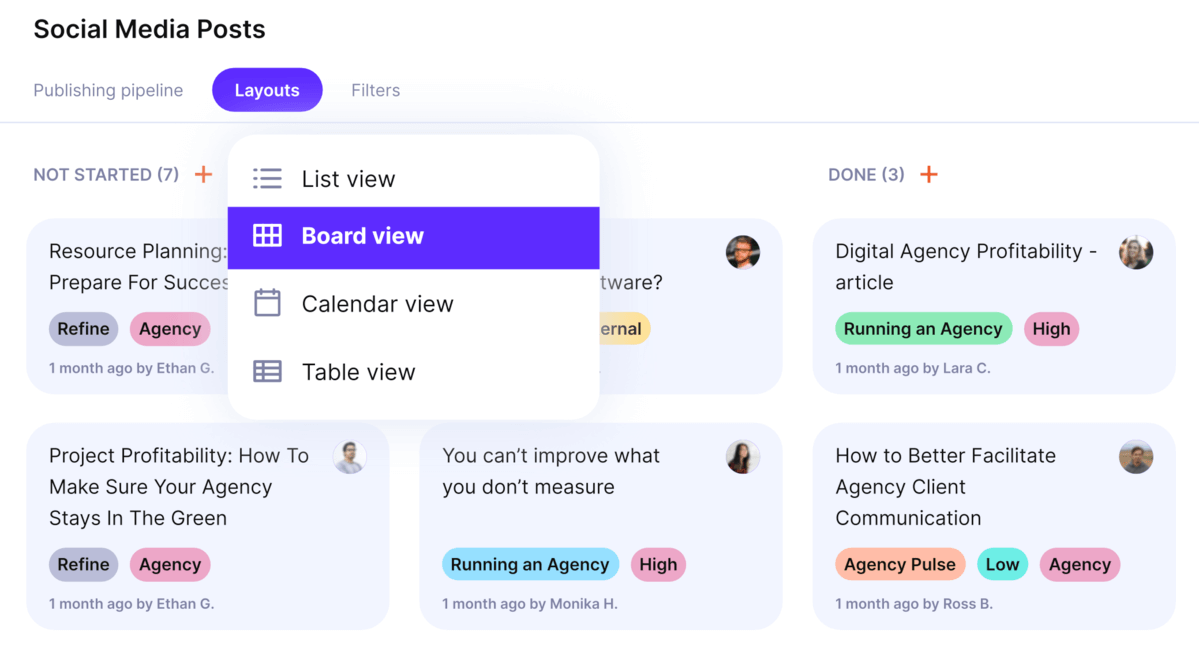
Manage remote and hybrid work with Productive’s Kanban boards.
4. Document the essentials, not everything
Create a one-page comms charter, a living decision log, and definitions of done for key deliverables. Keep them current and easy to find so people can answer common questions without asking.
In Productive: Create a task or project note for the communication charter, keep a running decision log as a checklist, and add definitions of done to task templates so expectations are clear before work starts.
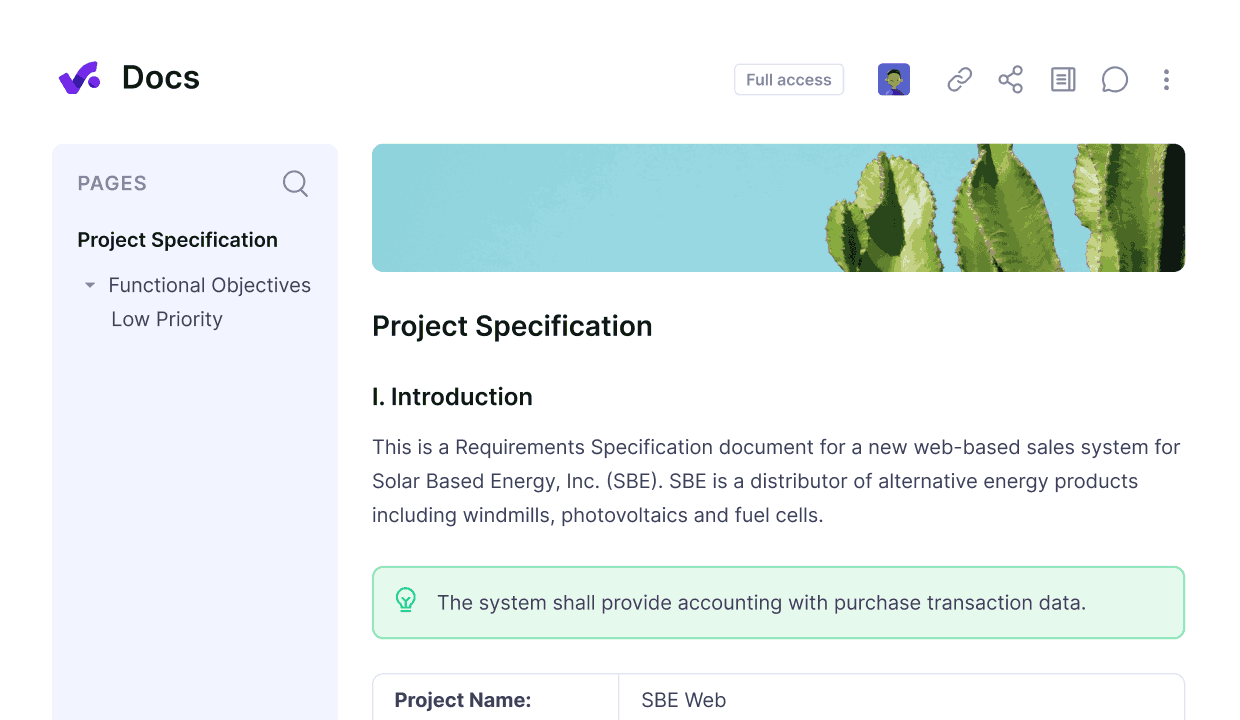
Share, edit and collaborate on all documentation in a single place.
What Tools Should You Use to Manage Remote Teams?
The best tools for managing remote teams are all-in-one project management tools. They reduce friction across people, tasks, timelines, and budgets in one place.
When updates live in chat, files in drives, and tasks somewhere else, work slows and details slip. Anchor your stack with a single platform for planning, time tracking, and reporting, then keep everything close to the work.
Productive is your trusty anchor if you want tasks, time, budgets, and reporting in one place.
Task & Time Management Tools
Use these to plan work, track time, and see progress against estimates. Examples include Productive, Asana, and ClickUp. In Productive, projects hold tasks with owners and due dates, time tracking rolls up to budgets, and dashboards surface performance metrics so you can spot overruns early.
This connects directly to clear goals and visible progress.
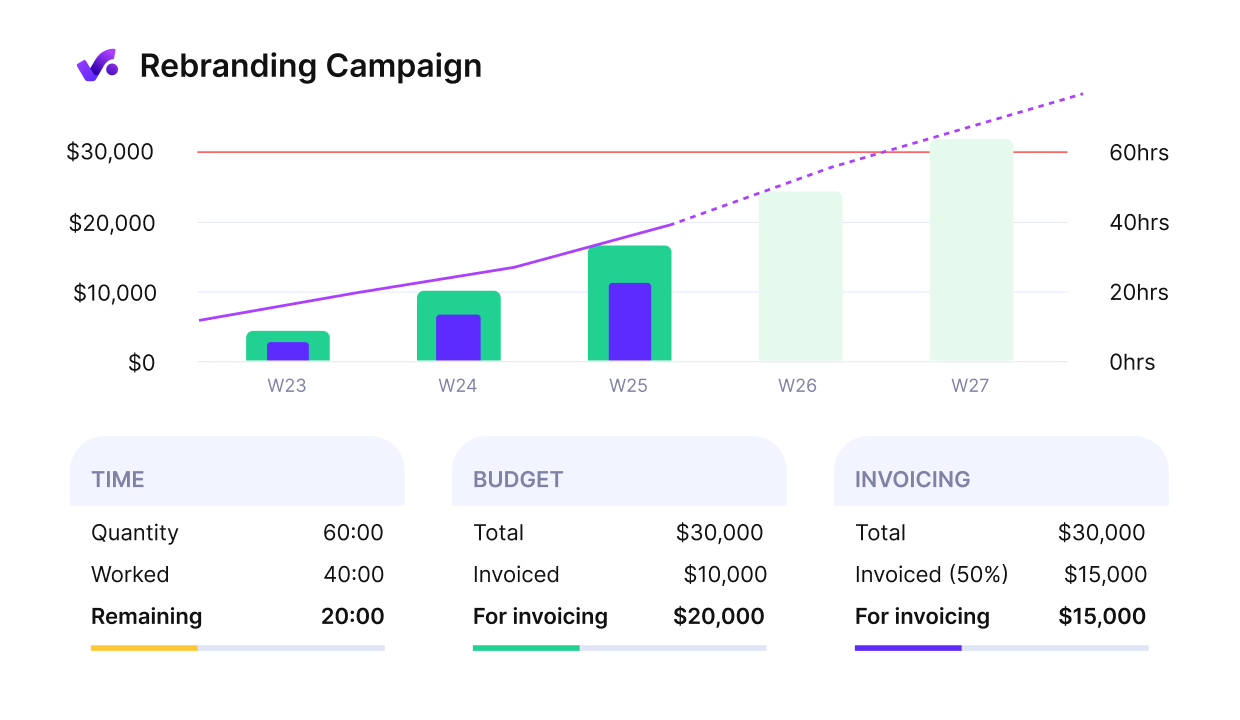
Productive gives you an early warning of budget overruns.
Communication & Async Update Tools
Use these to replace status meetings with written updates and short clips. Examples include Slack or Microsoft Teams for quick messages, Loom for async video updates, Zoom or Google Meet for video calls when live discussion is needed, and task comments in Productive for in-context updates and decision logs.
Set response time norms so communication tools support your cadence instead of creating noise.
File Sharing & Collaboration Platforms
Use these to keep files easy to find and linked to the work. Examples include Google Drive, OneDrive, and Dropbox for file sharing, plus Figma for design collaboration.
In Productive, attach files or drive links to tasks so handoffs include the right assets. If your team still relies on legacy apps, remote desktop access can help, though cloud-based software is usually simpler for virtual teams.
If you still haven’t made up your mind on what tool to use, there’s a handy article on choosing a project management tool you should check out.
How To Improve Communication in Remote Teams?
You improve communication in remote teams by agreeing on a simple weekly rhythm, assigning each message type to a communication channel, and keeping updates next to the work. Use live time for decisions and coaching, move status to short written updates, and set response-time norms so no one waits in limbo.
Synchronous: Meetings, 1:1s, Standups
Use live time for decisions, alignment, and coaching, not status reads. Keep meetings short with a clear agenda and outcomes. Record a short clip for those who cannot join and store notes in your online workplace.
Examples: a 25-minute weekly team sync on video conferencing to unblock priorities, 15-minute standups only when a launch is active, and biweekly 1:1s focused on goals and support.
Asynchronous: Status Updates, Docs, Decision Logs
Replace most status meetings with written updates and a lightweight decision log. Set response time norms for async messages and keep updates in context with task comments so people do not hunt through communication tools.
Examples: a Monday status update due by 10 local time, a shared doc with current risks and next steps, and a simple decision log that captures the choice, owner, and date.
How To Keep Remote Teams Engaged and Accountable?
Remote teams stay engaged when they understand expectations and feel trusted to meet them. Motivation comes from clear goals and timely recognition. Accountability comes from ownership and simple routines that make progress visible without constant check-ins.
We talk a whole lot more about all of this in our remote project management guide.
Clarity on Roles & Goals
Write down who owns what and what good looks like. Use one to three quarterly goals and define acceptance criteria for key deliverables.
Action: publish a one-page role map and add acceptance criteria to top tasks so there is no guesswork.
Feedback Loops & Recognition
Keep feedback frequent and small. Run short 1:1s, share weekly wins in writing, and close the loop when someone ships work. Share these feedback routines in the communication plan.
Action: add a weekly shout-out line to team updates and use a 1:1 agenda with two standing questions: what is working, what is stuck.
Autonomy with Accountability Systems
Give people room to work and make outcomes easy to see. Assign a single owner per deliverable, track status in a dashboard, and review results on a regular cadence.
Action: use a simple red amber green status and a 15-minute weekly demo to show outcomes, not activity.
How Productive can help: assign owners, due dates, and acceptance checklists on tasks, track time against budgets, and surface status in dashboards so trust is paired with visibility. Set recurring tasks for 1:1s and use task comments for lightweight recognition and follow-through.
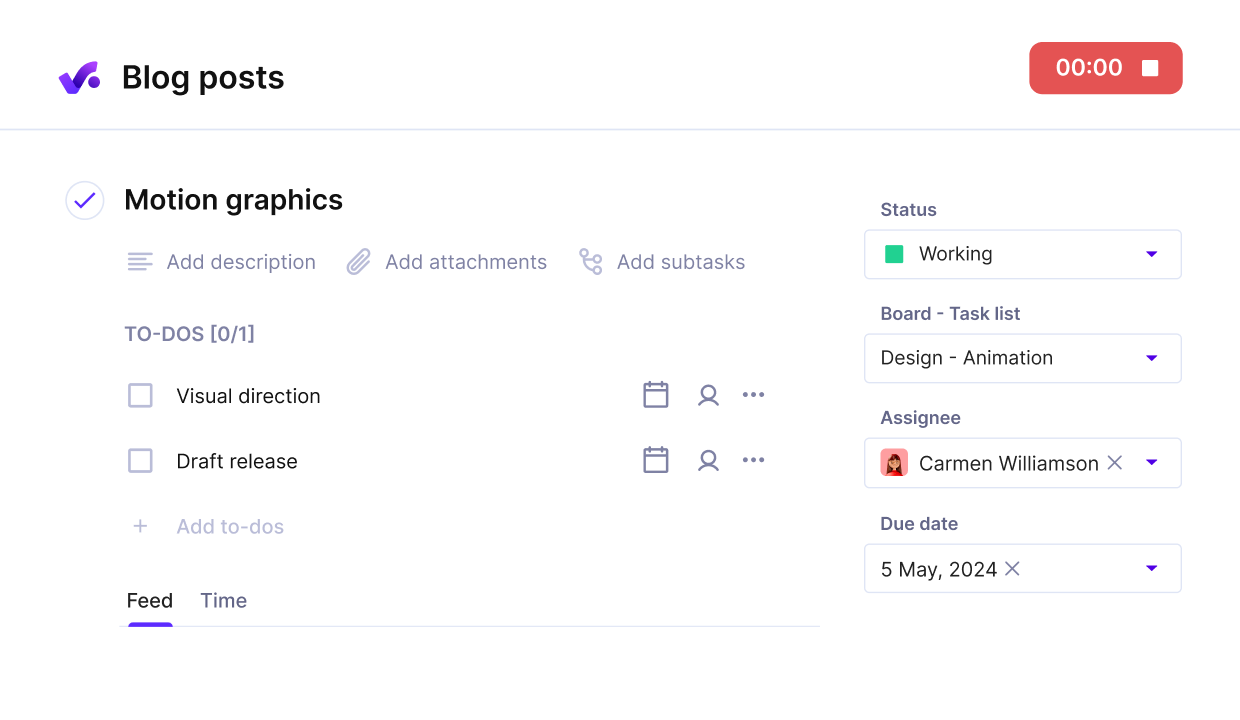
Assign owners to tasks with descriptions, to-do lists and do dates.
Example: Remote Team Management Plan Template
To make this practical, here is a filled example of a remote team management plan you can copy or adapt. It shows how roles, cadence, tools, and metrics fit together day to day.
Draft (Example Plan):
Team: Web Redesign Squad
Timeframe: Oct 1 to Dec 31
Time zones: CET, GMT, EST
Roles and hours (weekly):
- Project Manager (CET) – 20 h
- Web Lead, DRI for launch (CET) – 40 h
- Front-end Developer (EST) – 40 h
- Product Designer (CET) – 35 h
- Content Strategist (GMT) – 30 h
- QA Specialist (CET) – 15 h
Primary remote management tools:
- All-in-one project management software: Productive for tasks, time, budgets, and dashboards
- Communication: Slack for quick messages, Zoom for video calls
- Docs and files: Productive docs linked to tasks
- Google Drive for animations and video
- Design: Figma linked in task comments
Comms cadence:
- Async status update by 10:00 local every Monday
- Team sync on Tuesday, 25 minutes, clear agenda and outcomes
- Focus day on Wednesday, no internal meetings
- Async demo clips on Thursday, 5 minutes per owner
- Retro on Friday, 20 minutes, top 3 improvements
- Response time norms: within four business hours for async messages
Goals (SMART) and owners:
1. Launch new marketing site by Nov 30; Core Web Vitals pass on key pages; Owner: Web Lead
2. Publish 12 updated landing pages by Dec 20; average time on page up 20 percent; Owner: Content Strategist
3. Keep project within 95 percent of approved budget by Dec 31; Owner: Project Manager
Performance metrics or remote work to track weekly:
- On time tasks closed this week, target 90 percent
- Budget burn vs plan, variance under 5 percent
- Review turnaround time, under two business days
- Open risks and blockers, target zero critical
What can you learn from this example:
- One DRI (Directly Responsible Individual) per goal reduces debate and speeds decisions
- A light weekly rhythm replaces status meetings without losing clarity
- Files and docs linked to tasks make handoffs clean and fast
- A few outcome metrics keep everyone focused on results, not activity
- An all-in-one platform reduces context switching and reveals risks early
Conclusion: Make Remote Work Work Better
Remote team management isn’t about control; it is about setting up the right, straightforward systems. Set one to three SMART goals with clear owners, pick a weekly cadence for sync and async updates, and choose fewer tools by anchoring work in one platform where tasks, time, files, and decision logs live.
Use simple performance metrics and a shared dashboard to spot risks early and keep remote work on track. If it still feels messy, it is likely a systems issue, not a people issue.
If you want one place for people, projects, budgets, and reporting, book a demo with Productive.
Deliver and manage remote projects with Productive
Put tasks, time, budgets, and dashboards in one place. Productive gives your team a single source of truth with clear owners and live progress.
